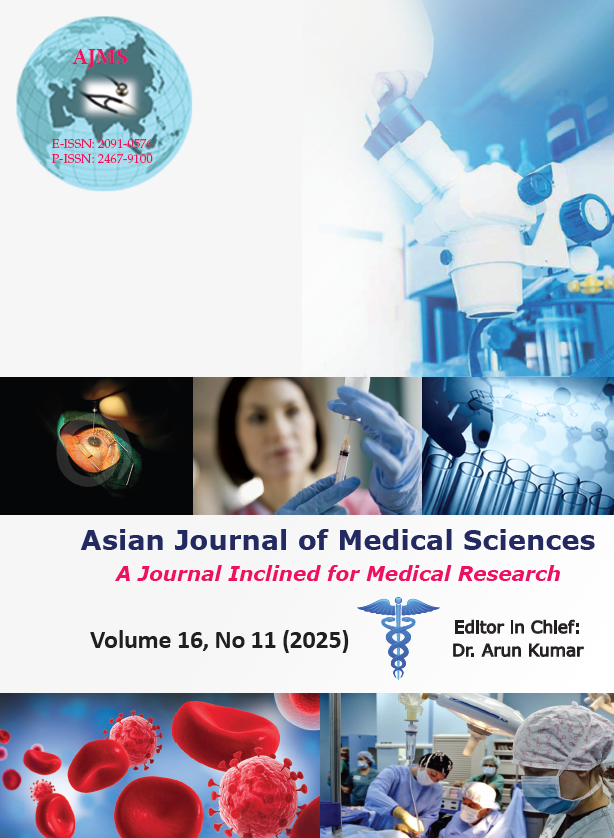Anesthetic management of cytoreductive surgery and hyperthermic intraperitoneal chemotherapy: A case series
DOI:
https://doi.org/10.71152/ajms.v16i11.4801Keywords:
Anesthesia; Cytoreductive; Hyperthermic intraperitoneal chemotherapyAbstract
Hyperthermic intraperitoneal chemotherapy (HIPEC) is a treatment for advanced abdominopelvic malignancies with peritoneal carcinomatosis. Cytoreductive surgery (CRS) with HIPEC offers hope by increasing the survival rates of these cancers. Anesthesiologists play an important role in HIPEC and cytoreductive procedures. This report presents five cases of advanced gynecological malignancies managed with CRS and HIPEC. All patients underwent the open coliseum technique. All patients scheduled for CRS+HIPEC were International Federation of Gynaecology and Obstetrics (FIGO) stage III or higher, confirmed by positron emission tomography-computed tomography, and staging laparotomy with intraoperative biopsies. Patients were preoperatively optimized based on age, physical status, and comorbidities. General anesthesia with thoracic epidural analgesia was administered. Physiological challenges during HIPEC, including fluid shifts, temperature fluctuations, and hemodynamic alterations, were effectively managed. None of the patients developed any major post-operative complications. They were extubated on the 1st post-operative day and discharged after 10–12 days. Understanding the physiological and pathological changes during CRS+HIPEC and individualized anesthesia management is essential for successful outcomes. Appropriate patient selection and vigilant monitoring minimize complications.
Downloads
Downloads
Published
How to Cite
Issue
Section
License
Copyright (c) 2025 Asian Journal of Medical Sciences

This work is licensed under a Creative Commons Attribution-NonCommercial-NoDerivatives 4.0 International License.
Authors who publish with this journal agree to the following terms:
- The journal holds copyright and publishes the work under a Creative Commons CC-BY-NC license that permits use, distribution and reprduction in any medium, provided the original work is properly cited and is not used for commercial purposes. The journal should be recognised as the original publisher of this work.
- Authors are able to enter into separate, additional contractual arrangements for the non-exclusive distribution of the journal's published version of the work (e.g., post it to an institutional repository or publish it in a book), with an acknowledgement of its initial publication in this journal.
- Authors are permitted and encouraged to post their work online (e.g., in institutional repositories or on their website) prior to and during the submission process, as it can lead to productive exchanges, as well as earlier and greater citation of published work (See The Effect of Open Access).





